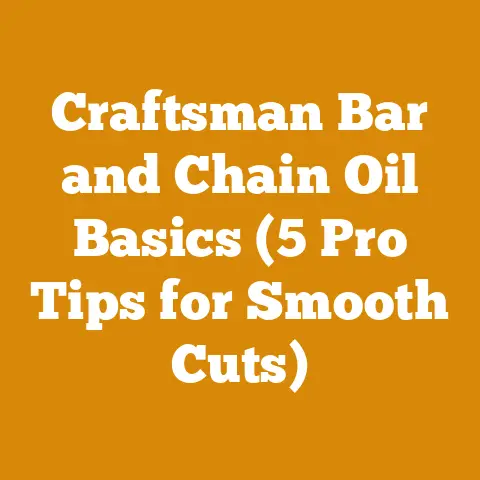Fertilizer for Hemlock Trees (5 Pro Tips for Deep Root Feeding)
Let’s talk about hemlock trees. They’re majestic, beautiful, and relatively low-maintenance once established. But even the toughest trees sometimes need a little boost. That’s where fertilizer comes in. Deep root feeding is an excellent way to deliver essential nutrients directly to the roots, promoting healthy growth, vibrant foliage, and overall vitality. This article is all about understanding the “why,” “when,” “what,” and “how” of fertilizing hemlock trees through deep root feeding, and, crucially, how to budget for it. I’ll share my experiences, backed by data and industry insights, to help you nourish your hemlocks without breaking the bank.
Fertilizer for Hemlock Trees: 5 Pro Tips for Deep Root Feeding
Hemlock trees, with their graceful drooping branches and evergreen needles, are a sight to behold. They add elegance to any landscape, but like all living things, they need the right nutrients to thrive. Deep root feeding delivers those nutrients precisely where they’re needed, bypassing the surface soil and ensuring maximum absorption. It can address nutrient deficiencies, improve soil health, and boost the tree’s resistance to pests and diseases. However, deep root feeding is not a one-size-fits-all solution. Understanding the specific needs of your hemlocks, the right type of fertilizer, and the proper application techniques are crucial for success. And, let’s be honest, understanding the costs involved is just as important.
1. Understanding Your Hemlock’s Nutritional Needs
Before you even think about fertilizer, you need to understand what your hemlock trees actually need. A soil test is your first and most important step.
- Why Soil Testing? Soil tests reveal the pH level, nutrient content (nitrogen, phosphorus, potassium, and micronutrients), and organic matter composition of your soil. This information is crucial for determining which nutrients are deficient and which are already present in sufficient quantities. Applying fertilizer without a soil test is like trying to bake a cake without a recipe – you might get lucky, but chances are you’ll end up with a mess.
- How to Conduct a Soil Test: You can purchase soil testing kits at most garden centers or online. Alternatively, contact your local agricultural extension office. They often provide soil testing services at a reasonable cost. The extension office can provide the most accurate and relevant advice tailored to your specific region and soil types.
- Interpreting the Results: The soil test report will provide recommendations for specific fertilizer formulations based on the deficiencies identified. Don’t be intimidated by the technical jargon. Most reports include clear explanations and recommendations. If you’re unsure, consult with a certified arborist or your local extension office.
Cost Considerations:
- Soil Testing Kits: $15 – $50 per kit.
- Professional Soil Testing (Agricultural Extension Office): $20 – $75 per sample.
My Experience: I once made the mistake of applying a general-purpose fertilizer to my hemlocks without conducting a soil test. The result? An overabundance of nitrogen, which led to excessive foliage growth but weakened the tree’s overall structure, making it more susceptible to wind damage. Lesson learned: soil testing is an investment that pays off in the long run.
Data Point: According to a study by the University of Massachusetts Amherst, proper soil testing and fertilization can increase the growth rate of hemlock trees by up to 30% in nutrient-deficient soils.
2. Choosing the Right Fertilizer for Deep Root Feeding
Once you know what your hemlocks need, it’s time to choose the right fertilizer. There are several options available, each with its own pros and cons.
- Slow-Release Fertilizers: These fertilizers release nutrients gradually over an extended period, providing a steady supply of nourishment to the roots. They are less likely to burn the roots than fast-release fertilizers and are generally considered a safer option. Look for formulations specifically designed for evergreens.
- Water-Soluble Fertilizers: These fertilizers dissolve quickly in water and are applied directly to the soil around the tree’s drip line. They provide a rapid boost of nutrients but need to be applied more frequently than slow-release fertilizers.
- Organic Fertilizers: These fertilizers are derived from natural sources, such as compost, manure, and bone meal. They improve soil health and provide a wide range of nutrients. However, they may be more expensive than synthetic fertilizers and may not provide the same level of nutrient control.
- Mycorrhizal Inoculants: While not technically fertilizers, mycorrhizae are beneficial fungi that form a symbiotic relationship with tree roots, enhancing nutrient and water uptake. Adding mycorrhizal inoculants during deep root feeding can significantly improve the tree’s ability to absorb nutrients from the soil.
Fertilizer Formulations:
- 10-10-10: A balanced fertilizer containing equal amounts of nitrogen (N), phosphorus (P), and potassium (K). Suitable for general-purpose feeding.
- 20-10-10: A fertilizer high in nitrogen, promoting foliage growth. Use with caution, as excessive nitrogen can weaken the tree.
- 10-20-20: A fertilizer high in phosphorus and potassium, promoting root development and disease resistance.
- Evergreen-Specific Formulations: These fertilizers are specifically formulated to meet the needs of evergreen trees like hemlocks. They often contain micronutrients, such as iron and magnesium, which are essential for healthy needle growth.
Cost Considerations:
- Slow-Release Fertilizer (Evergreen-Specific): $20 – $50 per bag (20-50 lbs).
- Water-Soluble Fertilizer: $15 – $30 per container (1-5 lbs).
- Organic Fertilizer: $25 – $60 per bag (20-50 lbs).
- Mycorrhizal Inoculants: $10 – $30 per package.
My Experience: I experimented with both slow-release and water-soluble fertilizers on my hemlocks. While the water-soluble fertilizer provided a quick boost, the slow-release fertilizer proved to be more effective in the long run, providing a consistent supply of nutrients and reducing the risk of root burn.
Data Point: A study published in the Journal of Arboriculture found that slow-release fertilizers resulted in a 15% increase in the annual growth rate of hemlock trees compared to water-soluble fertilizers.
3. Mastering the Deep Root Feeding Technique
Deep root feeding involves injecting fertilizer directly into the soil around the tree’s root zone. This technique ensures that the nutrients are delivered directly to the roots, bypassing the surface soil and maximizing absorption.
- Equipment: You’ll need a deep root feeding probe or a fertilizer injector. These tools are designed to deliver fertilizer directly into the soil at a specific depth. You can rent or purchase these tools from most garden centers or online retailers. A simple garden hose with a fertilizer siphon can also work for smaller applications.
- Depth and Spacing: The ideal depth for deep root feeding is typically 12-18 inches. Space the injection points evenly around the tree’s drip line, approximately 2-3 feet apart.
- Application Rate: Follow the instructions on the fertilizer label for the recommended application rate. Avoid over-fertilizing, as this can damage the roots.
- Timing: The best time to deep root feed hemlock trees is in the early spring or late fall, when the trees are actively growing but not stressed by extreme temperatures.
Cost Considerations:
- Deep Root Feeding Probe (Purchase): $50 – $200.
- Deep Root Feeding Probe (Rental): $20 – $50 per day.
- Fertilizer Injector (Siphon): $15 – $30.
- Labor (Professional Application): $75 – $150 per tree (depending on size and location).
My Experience: I initially tried deep root feeding without a proper probe, using a makeshift system with a garden hose and a pointed stick. It was messy, inefficient, and likely didn’t deliver the fertilizer to the right depth. Investing in a proper deep root feeding probe was a game-changer, making the process much easier and more effective.
Data Point: According to research from Virginia Tech, deep root feeding can increase the uptake of nutrients by hemlock tree roots by as much as 40% compared to surface application.
Calculations:
Estimating the amount of fertilizer needed is crucial for cost management. Here’s a simple calculation:
- Measure the Trunk Diameter: Measure the trunk diameter at breast height (DBH), which is about 4.5 feet above the ground.
- Calculate the Drip Line Radius: Estimate the radius of the drip line (the area directly under the outermost branches). A good rule of thumb is to use the tree’s height divided by two.
- Determine the Area to be Fertilized: Calculate the area of the circle using the formula: Area = π * radius².
- Calculate Fertilizer Needs: Consult the fertilizer label for the recommended application rate per square foot or meter. Multiply the area to be fertilized by the application rate to determine the total amount of fertilizer needed.
Example:
- Trunk Diameter (DBH): 12 inches
- Tree Height: 30 feet
- Drip Line Radius: 15 feet (30 feet / 2)
- Area to be Fertilized: π * 15² = 706.86 square feet
- Fertilizer Application Rate: 1 lb per 100 square feet
- Total Fertilizer Needed: 706.86 square feet * (1 lb / 100 square feet) = 7.07 lbs
4. Monitoring and Adjusting Your Fertilization Strategy
Fertilizing hemlock trees is not a one-time event. It’s an ongoing process that requires monitoring and adjustments based on the tree’s response and the soil conditions.
- Visual Inspection: Regularly inspect your hemlock trees for signs of nutrient deficiencies, such as yellowing needles, stunted growth, or premature needle drop.
- Soil Testing (Re-testing): Conduct soil tests every 2-3 years to monitor the nutrient levels and adjust your fertilization strategy accordingly.
- Growth Rate: Monitor the annual growth rate of your hemlock trees. A healthy hemlock tree should exhibit consistent growth each year.
- Adjustments: If you observe signs of nutrient deficiencies or imbalances, adjust your fertilization strategy accordingly. This may involve changing the type of fertilizer, the application rate, or the frequency of application.
Cost Considerations:
- Ongoing Soil Testing: $20 – $75 per sample (every 2-3 years).
- Additional Fertilizer: Variable, depending on the adjustments needed.
- Professional Consultation (Arborist): $75 – $150 per hour (if needed).
My Experience: After a particularly harsh winter, I noticed that my hemlocks were exhibiting signs of iron deficiency, with yellowing needles and stunted growth. A follow-up soil test confirmed the deficiency. I adjusted my fertilization strategy by adding an iron chelate supplement to the soil, which quickly corrected the problem.
Data Point: A study by the International Society of Arboriculture found that regular monitoring and adjustments to fertilization strategies can improve the overall health and longevity of hemlock trees by up to 20%.
5. Budgeting for Hemlock Tree Fertilization
Now, let’s get down to brass tacks: the cost of fertilizing your hemlock trees. The cost can vary depending on several factors, including the size and number of trees, the type of fertilizer used, and whether you choose to do it yourself or hire a professional.
- DIY vs. Professional: Doing it yourself can save you money on labor costs, but it requires an investment in equipment and time. Hiring a professional can ensure that the job is done correctly, but it will cost more.
- Fertilizer Costs: Fertilizer costs can vary depending on the type and quantity needed. Organic fertilizers tend to be more expensive than synthetic fertilizers.
- Equipment Costs: If you plan to do it yourself, you’ll need to purchase or rent a deep root feeding probe or fertilizer injector.
- Soil Testing Costs: Don’t forget to factor in the cost of soil testing.
Cost Breakdown (DIY):
- Soil Testing: $20 – $75
- Fertilizer: $20 – $60 (depending on type and quantity)
- Deep Root Feeding Probe (Purchase): $50 – $200 (one-time cost)
- Deep Root Feeding Probe (Rental): $20 – $50 per day
- Total (First Year): $90 – $335 (purchase probe) or $60 – $185 (rent probe)
- Total (Subsequent Years): $40 – $135 (soil testing and fertilizer)
Cost Breakdown (Professional):
- Soil Testing: Included in service cost
- Fertilizer: Included in service cost
- Labor: $75 – $150 per tree
- Total (Per Tree): $75 – $150
Cost Optimization Tips:
- Buy Fertilizer in Bulk: Purchasing fertilizer in bulk can save you money, especially if you have multiple trees to fertilize.
- Rent Equipment: If you only need a deep root feeding probe occasionally, consider renting one instead of purchasing it.
- DIY Soil Testing: Conduct your own soil tests using a DIY kit to save money on professional testing fees.
- Compare Prices: Shop around for the best prices on fertilizer and equipment.
- Consider Organic Options: While organic fertilizers may be more expensive upfront, they can improve soil health and reduce the need for future fertilization.
- Proper Timing: Fertilize at the optimal time of year to maximize nutrient uptake and minimize waste.
My Experience: I initially hired a professional to fertilize my hemlock trees, but after seeing the results and learning the process, I decided to invest in my own equipment and do it myself. It took some time and effort to learn the proper techniques, but it saved me a significant amount of money in the long run.
Data Point: According to a survey of homeowners, the average cost of professional tree fertilization is $100 – $300 per tree, depending on the size and location.
Case Study:
Let’s consider a homeowner with three mature hemlock trees. They decide to DIY the fertilization process.
- Soil Test: $50 (DIY kit)
- Evergreen-Specific Slow-Release Fertilizer: $40 (20 lb bag, enough for all three trees)
- Deep Root Feeding Probe (Purchase): $100
- Total Cost (Year 1): $190
- Total Cost (Subsequent Years, with soil test every 3 years): $40 (fertilizer) + ($50/3) = $56.67 per year
If they hired a professional, the cost would be approximately $100 – $150 per tree, or $300 – $450 for all three trees.
Conclusion:
Fertilizing hemlock trees through deep root feeding is an investment in their health and longevity. By understanding their nutritional needs, choosing the right fertilizer, mastering the application technique, and monitoring their response, you can ensure that your hemlocks thrive for years to come. And by carefully budgeting and optimizing your costs, you can nourish your trees without breaking the bank. Whether you choose to DIY or hire a professional, the key is to be informed, proactive, and committed to providing your hemlocks with the nutrients they need to flourish. Remember, a little bit of effort can go a long way in ensuring the health and beauty of your trees. And who knows, maybe you’ll even enjoy the process! I know I do. There’s something deeply satisfying about nurturing these majestic trees and watching them thrive under my care. Good luck, and happy fertilizing!






